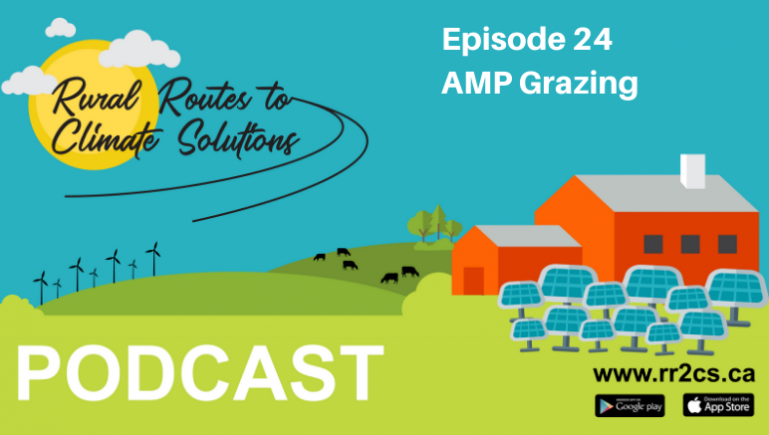Podcast: Play in new window | Download
Subscribe: RSS
Adaptive multi-paddock (AMP) grazing sounds intimidating. Maybe because rotational grazing has been the go-to title for forever and AMP makes it sound even more complex and overwhelming. In reality, it can be as straightforward or complicated as you’d like it to be. It’s a flexible management system that no two farmers implement the exact same way, which has been one of the hurdles when it comes to researching it’s efficacy. Dr. Edward Bork and PhD student Jessica Grenke join Rural Routes to Climate Solutions to discuss the unique approach they are taking researching adaptive multi-paddock grazing systems.
Listen in and hear how learning about plant ecology can help us know how to better manage the plant’s during their life cycles. Research about plant ecology can also help us choose which plants we’d like to use in our grazing systems. Native plants, tame plants, species that are more grazing tolerant, species that are more drought tolerant, etc. This ground level decision can set the foundation for how a producer grazes and what kind of results they can expect in their soil and it’s microbial community.
What the heck is the microbial community? It’s made up of all the organisms living in the soil that help make it a functioning and hopefully balanced member of the ecosystem. Dr. Bork talks about how changes in management can impact the microbial community and how this can have effects on soil carbon sequestration. There are also microbials that help offset the methane produced by grazing animals. AMP may have beneficial impacts on all of these things and by working with agricultural producers to research how AMP grazing impacts the land and by how much has given both Dr. Bork and Jessica Grenke some really interesting information that they so kindly shared with us in this episode.
Highlights:
(0:45) Adaptive multi-paddock grazing aka AMP. What is it? You may know it as rotational grazing or intensive grazing.
(5:47) Plant blindness – How we tend to overlook plants for more charismatic species like animals.
(20:18) Carbon pool is not that dissimilar from the boreal forest. Our arid grasslands store between 40 and 45 tonne of carbon per hectare. Some more productive grasslands in the foothills are holding upwards of 150 tonne/hectare or more.
(22:56) Is grazing detrimental to soil carbon sequestration?
(24:53) There are instances where the key to maintaining productivity in grasslands is tied to some presence of grazing. The question is where, how much and how often.
(28:35) Native plant species versus tame species. Native species are notorious for having a high proportion of their biomass below ground which can mean a large pool of carbon storage. Some tame species have been bred for lots of biomass above ground resulting in that biomass being susceptible to quick turn over so it is less effective as long term carbon storage.
(32:38) Soil carbon levels are regulated by the soil microbial community. It is typically in equilibrium with whatever the climatic regime is and whatever the ongoing land use regime is. If you change the land use you will change the net turn over of the carbon. For example; when a native grassland is ploughed.
(34:43) Methanotrophs – Bacteria that can sequester methane. How does this process work?
(35:55) Cows are often implicated as contributors to global warming because of their methane production but that’s only half of the equation for the grasslands. A healthy grassland should have a sizable population of methanotrophs in the soil that are consuming methane, potentially offsetting the methane production from above ground.
(36:44) A number of studies have shown healthy grasslands, when functioning properly, are a significant sink for methane.
(59:20) Rotating every day has great animal husbandry benefits like increased health monitoring and animal handleability.
(1:08:38) Ranchers are the original conservationists (post-colonization). For example, in the Special Areas they have learned the value of that grass, the sensitivity of that grass and they’ve learned to balance the two.
Useful Links:
Rangeland Research Institute
rri.ualberta.ca
Want to learn more? Listen to our very first episode Cows and Climate Change with the author of Defending Beef Nicolette Hahn Niman.

